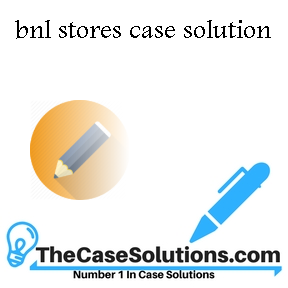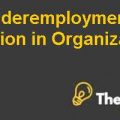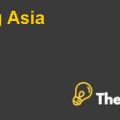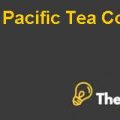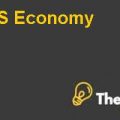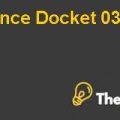BNL Stores Case Solution
Super center stores are the latest development in the retail business industry. These superstores provide wide and diversified range of goods and commodities that are available at lower prices to the public. These stores provide a one stop shopping for the customers. The retail super center business is one of the flourishing business in the United States. The industry had recorded $251 billion from the business in the year 2010.
BNL store is an established firm which has been operating since40 years in the retail industry. It mainly carries out its business operations in the Midwestern region of the country. The company has a growth strategy and has the objective to expand in the form of super stores where wide variety of commodities can be offered to the public. Thus, under this growth strategy, the company can replace its former trading discount stores with the new central superstores that will offer more diversified goods and appliances to the public. The company, through itsnew stores, offers durable goods and many expensive appliances and furniture.
A system of store credit is also devised on these new stores. The authority to allow a store credit to thecustomer rests with the store manager. The credit facility is introduced to facilitate the customers to buy expensive high end goods. Moreover, in order to increase the sales, the company has introduced a bonus based system where the store managers will be paid annual bonus based on the net income generated. This incentive could lead the store managers to grant the store credit facility even to the lesscredit worthy customers in order toincrease sales. This has highly affectedthe business of BNL.In order to earn high bonuses, the store manager granted store credits lavishly without proper credit worthiness test of the customers. The credit sales also increased, as a result, the company faced shortage of cash.
The stocks of the company have declined sharply from $100 to $10 in the previousyears. The company used to pay attractive dividends on its shares however,this did not prevent the decline in the share prices. Due to the poor performance of the company’s stock, the investors lost confidence on the company.
The company has to take some major decisions and has to make necessary changes in its business strategy in order to avoid the company from going bankrupt. The company has been generating high credit salesas well as its level of cash has declined which can also be seen through the cash flows which are negative.
Analysis
The case provides the financial statement of the BNL stores with incomplete cash flow statement. Moreover, by usingthis financial information, the quantitative analysis will be made. The ratios will be calculated based on the financial statements whichwill provide information about the financial health of the company. The cash flow statementwhichis incomplete will be completed using the information and calculations from the related existing balance sheet and income statement. Furthermore, byanalyzing the chances of whether the company might gointo bankruptcy, the model by Altman,whichis Altman Z-score model, will be used.
Financial Ratios
The ratios are calculated for the year 2008, 2009 and 2010. For the calculations, the balance sheet and the income statement havebeen used. Therefore,the ratios are calculated as below:
| 2002 | 2003 | 2004 | 2005 | 2006 | 2007 | 2008 | 2009 | 2010 | |
| Profitability ratios | |||||||||
| Net profit margin | 3.42% | 3.36% | 3.46% | 3.44% | 3.14% | 2.55% | 2.29% | 0.59% | -11.82% |
| Return on equity | 14.87% | 13.71% | 13.53% | 14.38% | 13.10% | 10.81% | 11.30% | 3.34% | -183.4% |
| Return on assets | 8.87% | 8.70% | 8.85% | 7.06% | 6.22% | 4.75% | 3.40% | 0.91% | -19.29% |
| Turnover ratios | |||||||||
| Days receivables | 43.62 | 49.57 | 51.61 | 110.66 | 121.67 | 126.81 | 120.49 | 106.99 | 89.79 |
| Inventory turnover | 3.70 | 3.74 | 3.69 | 3.68 | 3.24 | 3.12 | 2.82 | 2.85 | 3.20 |
| Total asset turnover | 2.21 | 2.16 | 2.14 | 1.72 | 1.56 | 1.46 | 1.48 | 1.55 | 1.63 |
| Liquidity ratios | |||||||||
| Current ratio | 2.66 | 2.49 | 2.28 | 1.71 | 1.57 | 1.75 | 1.55 | 1.58 | 1.24 |
| Quick ratio | 1.21 | 1.14 | 1.05 | 1.09 | 0.99 | 1.11 | 0.91 | 0.89 | 0.69 |
| Solvency ratios | |||||||||
| Debt to equity ratio | 0.96 | 0.89 | 0.82 | 1.43 | 1.67 | 1.90 | 2.32 | 2.66 | 8.51 |
| Debt to capitalization ratio | 0.58 | 0.52 | 0.39 | 0.38 | 0.39 | 0.66 | 0.70 | 0.73 | 0.89 |
....................
This is just a sample partial case solution. Please place the order on the website to order your own originally done case solution

